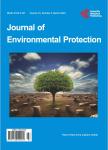Assessing Naturalness Changes Resulting from a Historical Land Use in Brazil South Region: An Analysis of the 1986-2016 Period
Assessing Naturalness Changes Resulting from a Historical Land Use in Brazil South Region: An Analysis of the 1986-2016 Period作者机构:PPG-ERN/UFSCar Universidade Federal de Sã o Carlos (UFSCar) Sã o Carlos Brazil Department of Biological Science Universidade Regional Integrada do Alto Uruguai e das Missõ es (URI) Erechim Brazil
出 版 物:《Journal of Environmental Protection》 (环境保护(英文))
年 卷 期:2019年第10卷第2期
页 面:149-163页
学科分类:1002[医学-临床医学] 100214[医学-肿瘤学] 10[医学]
主 题:Land Use and Cover Native Vegetation Urbanity Index Environmental Management
摘 要:The effects of land use and cover changes and the application of the Urbanity Index were analyzed to identify critical or non-critical naturalness scenery in the Northern Region of Rio Grande do Sul (Brazil), over a period of 30 years. Between 1986 and 2016, the main significant land use change was the reduction of the agricultural anthropic and the increase of the natural vegetation land use areas. About 90% - 80% of the total study areas were characterized by anthropic pattern features, with a predominantly agricultural matrix. The conversion of agricultural anthropic into natural areas resulted in increased naturalness landscape and a gain in the stock of natural capital. The increase in the natural vegetation area, mainly to the north and east of the region, set in a steep relief, became remarkable after 1990. The Urbanity Index values evidenced a highest naturalness condition (natural vegetation areas) to the northern and eastern, while a smaller naturalness condition (agricultural and non-agricultural areas) to the southern and western and central of the Northern Region of Rio Grande do Sul. These changes are related to a non-impaired (northern and eastern) and a impaired scenery (southern, western and central portion) of the ecological sustainability of the Northern Region of Rio Grande do Sul, after a 30-year period (1986-2016). These results pointed out that land use transitions resulted in a consolidated farming scenario in which agricultural intensification coincided with the reduction of farming area and increased naturalness as a reverse trend to the agricultural frontier dynamics.



